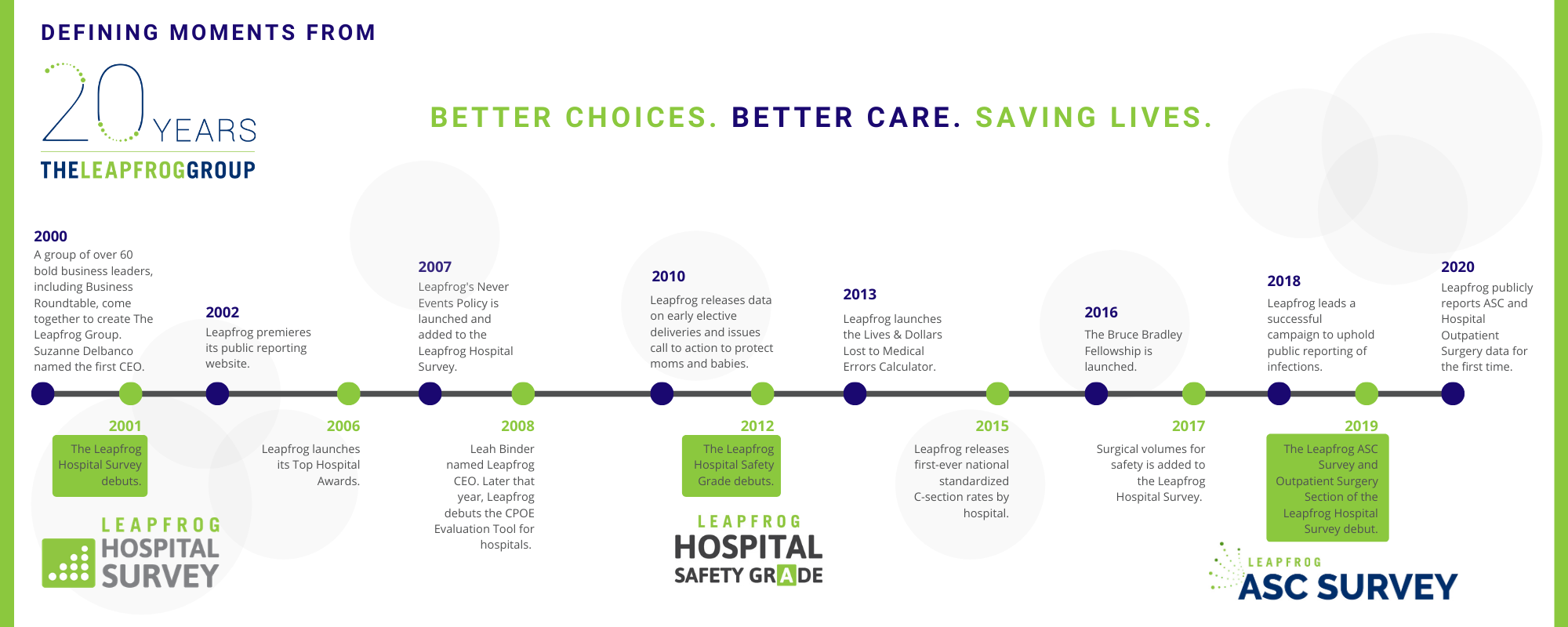|
|
| click to expand > Join our 20th anniversary celebration |
Our Story
In 1998 a small group of business leaders gathered for dinner. By the time dessert was served, they had sketched out an idea to transform U.S. health care.
These employers recognized severe dysfunction in the health care marketplace. Throughout the country, employers were spending billions of dollars on health care—with no way of assessing its quality or enabling their employees to shop for care. And a 1999 report by the Institute of Medicine threw the magnitude of the problem into sharp relief. That report, "To Err is Human," revealed that up to 98,000 Americans die every year from preventable medical errors in hospitals.
In 1999, "To Err is Human" revealed that 98,000 people die every year due to medical errors.
Enough was enough. Our founders partnered with Business Roundtable, leading researchers and academics, and top quality and patient safety experts with a plan to reverse these troubling trends. Believing in the power of transparency to drive giant leaps forward in safety and quality of care, these pioneers created The Leapfrog Group.
Leapfrog started with a set of simple, focused principles that at the time of our founding were considered outrageous, but today are mainstream: people should have access to information to make informed decisions about their health care, and purchasers should pay for the best outcomes at the best price. By shining the light on hospital performance, employers could use their purchasing power to reward the top achievers, and foster a marketplace for high-value care.
Leapfrog started with a set of simple, focused principles that at the time of our founding were considered outrageous, but today are mainstream.
Leapfrog launched the Leapfrog Hospital Survey in 2001, asking hospitals to voluntarily and publicly report on their performance on a set of three “leaps”:
- Whether the hospital had Computerized Physician Order Entry (CPOE);
- Whether their ICUs were staffed appropriately with intensivists; and,
- Whether the hospital had enough surgical volume to safely perform certain high-risk procedures.
In that first year, 200 hospitals reported, and Leapfrog published the results on its website.
Fast Forward
In 2012, Leapfrog launched the highly successful Leapfrog Hospital Safety Grade, a letter grade assigned to all general hospitals rating how safe they are for patients. Issued twice per year, the Leapfrog Hospital Safety Grade empowers regular people to find a safer hospital in their community by using the easy-to-understand A, B, C, D, F grading system.
In 2019, Leapfrog launched the Leapfrog Ambulatory Surgery Center Survey and a corresponding new section of the Leapfrog Hospital Survey for Hospital Outpatient Departments.
This year, over 2,200 hospitals have reported to the Leapfrog Hospital Survey, which still contains the three original leaps, along with new measures critical to purchasers and consumers, including infection rates, Cesarean section rates, and health equity.
What's Next
While tools for consumers to compare among providers are more common today, Leapfrog is still the one and only national purchaser-driven initiative to collect information from hospitals for the purpose of public reporting.
Leapfrog has a long way to go before the problem of patient safety is solved.
But the vision that started our movement has changed the national conversation on safety and quality. As we leap into our next two decades, we hope you will join us in celebrating 20 years of galvanizing better choices, better care, and saving lives.

